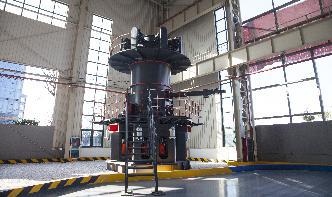Find MSDS Lead Paint related suppliers, manufacturers, products and specifications on GlobalSpec a trusted source of MSDS Lead Paint information. ... In addition to use of antimony titanate compounds noted above, we also found MSDS data showing some use of antimony oxide in lead chromate paints at levels of 1 to 2%. ... Characterization of ...
Antimony Trioxide is used mainly in fire retardant formulations for plastics, rubbers, textiles, paper and paints. Further, Antimony Trioxide can be used as an additive in glass and ceramic products and as a catalyst in the chemical industry. Occupational exposure may occur during mining, processing and smelting of antimony
Processes Antimony is a semimetallic chemical element which can exist in two forms: the metallic form is bright, silvery, hard Antimony compounds are used to make flameproofing materials, paints, ceramic enamels, glass and pottery.
Jan 15, 2011· Antimony compounds in the form of oxides, sulfides, sodium antimonate (NaO3Sb), and antimony trichloride (SbCl3) are used in the making of flame .
CVD of fluorine or antimonydoped tin oxide is the preferred method of deposition for tin oxides because this process flow is very compatible with hot glass in a float glass production line. This is typically referred to as inline or online TCO deposition [113] .
It is a major constituent of small arms and ammunition. Medicines like antiprotozoan drugs have this element in traces. Oxides and sulfides of antimony and compounds like sodium antimonate and antimony trichloride are used to make ceramic enamels, glass, flameproofing compounds, paints, and pottery.
In other minor uses, antimony oxides are used as white pigments in paints, whereas antimony trisulfide and pentasulfide yield black, vermi llion, yellow and orange pigments.
Nov 12, 2008· Antimony trioxide is used mainly in fireretardant formulations for plastics ( PVC resin, Vinyl resin and other resins compatible to DOP ), rubbers, textiles, paper and paints. It is also used as an additive in glass and ceramic products and as a catalyst in the chemical industry.
rubber, paints, paper, textiles and electronics. Antimony trioxide is appropriate for use in PP, PE, EPDM, PVC, HIPS, ABS, polyurethanes, phenolics, epoxies, and many others. Other applications of antimony trioxide include a clarifying agent for glass, an opacifier for porcelain and enamel, and a white pigment. For any handling and storage
mining antimony processing plants Mineral Processing EPC. Industrial Uses Antimony Wholesale, Antimony Suppliers. mining antimony processing plants offers 60 industrial uses antimony products. About 45% of these are . 98%min Sb2O3 Antimony sesquioxide Antimony trioxide Antimonous oxide Flowers of Antimony for catalyst use .
Antimony Processing Equipment,antimony ore flotation method For most of the reelection of antimony ore processing are applicable, because a large part of the antimony mineral density, coarse mineral and gangue ease ...
antimony processing mineral. innovative processing and hydrometallurgical treatment methods, jul 1, 2010part ii hydrometallurgy of complex antimony oresthe authors introduce a processing plant which is a single operating processor ofresearch institute of comprehensive exploitation of mineral resources, russianthermodynamic process modelling of black copper addition to a, the first 2014 issue ...
Huachang Antimony Industry purchases antimony materials regularly, such as antimony ore, antimony Our company has 8 professional production lines to smelt all kinds of complicated antimony materials with Smelting Processing Plant The purchase quality standard of antimony .
HazMap. Antimony trioxide is produced in the US by roasting antimony sulfide ores, resublimating crude antimony oxide, or oxidizing molten antimony metal. [ACGIH] Used to make tartar emetic, paint pigments, stains for iron and copper, enamels, ceramics, glasses, mordants, plastic stabilizers, phosphors, and flameretardants for canvas, textiles,...
Antimony and antimony alloys are a great way to harden other metals by melting and mixing them in. Remember Antimony melts at over 1100 F, so if your looking to harden up a lead alloy you already have, try our Super Hard alloy that easily blends in at only 750 F. Certs for Antimony Ingot
Antimony is a member of group 15 of the periodic table, one of the elements called pnictogens, and has an electronegativity of In accordance with periodic trends, it is more electronegative than tin or bismuth, and less electronegative than tellurium or arsenic.
Antimony Mineral Processing Process Of Mining Antimony sand making line. antimony gold mine process by Production Line. antimony gold mine process by Production Line is manufactured from Shanghai Xuanshi,It is the The mine
Table 4 presents available data on antimony in wastewaters from primary and secondary non ferrous smelting, excluding secondary lead. Secondary lead smelting is a source of secondary antimony. Antimony is persistently present in significant concentrations in the .
Lead processing: Lead processing, preparation of the ore for use in various products. Lead (Pb) is one of the oldest metals known, being one of seven metals used in the ancient world (the others are gold, silver, copper, iron, tin, and mercury). Its low melting point of 327 °C (621 °F), coupled with its easy
Antimony is mainly used to form alloys (mixtures of metals), which are used for castings, bearings, metal sheeting and piping, pewter, solder and lead storage batteries. Antimony oxide is added to plastics and textiles to reduce flammability. It is also used as an enamel for plastics, metals and glass and is added to paints and ceramics.
Mar 06, 2017· Processing of flotation concentrates using the alkaline leach procedure from the Los Juarez gold, silver, and antimony property in Queretaro, Mexico has confirmed good recovery.
• Workers in formulation, processing, and manufacturing of consumer products are exposed to antimony(III) trioxide. Antimony(III) trioxide is the most commercially significant form of processed antimony Uses of Antimony(III) Trioxide.
Release to the environment of this substance can occur from industrial use: industrial abrasion processing with low release rate ( cutting of textile, cutting, machining or grinding of metal) and industrial abrasion processing with high release rate ( .






















